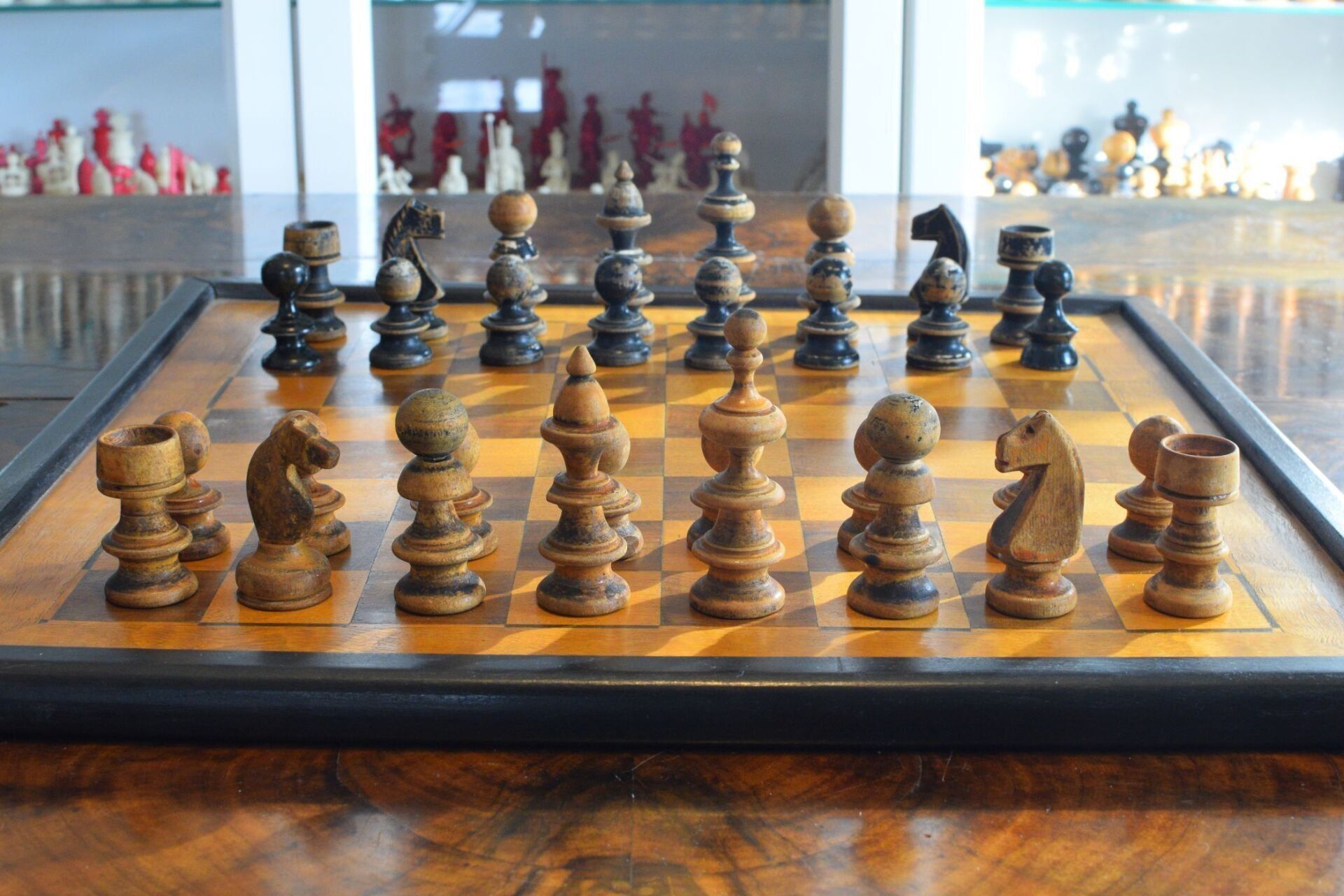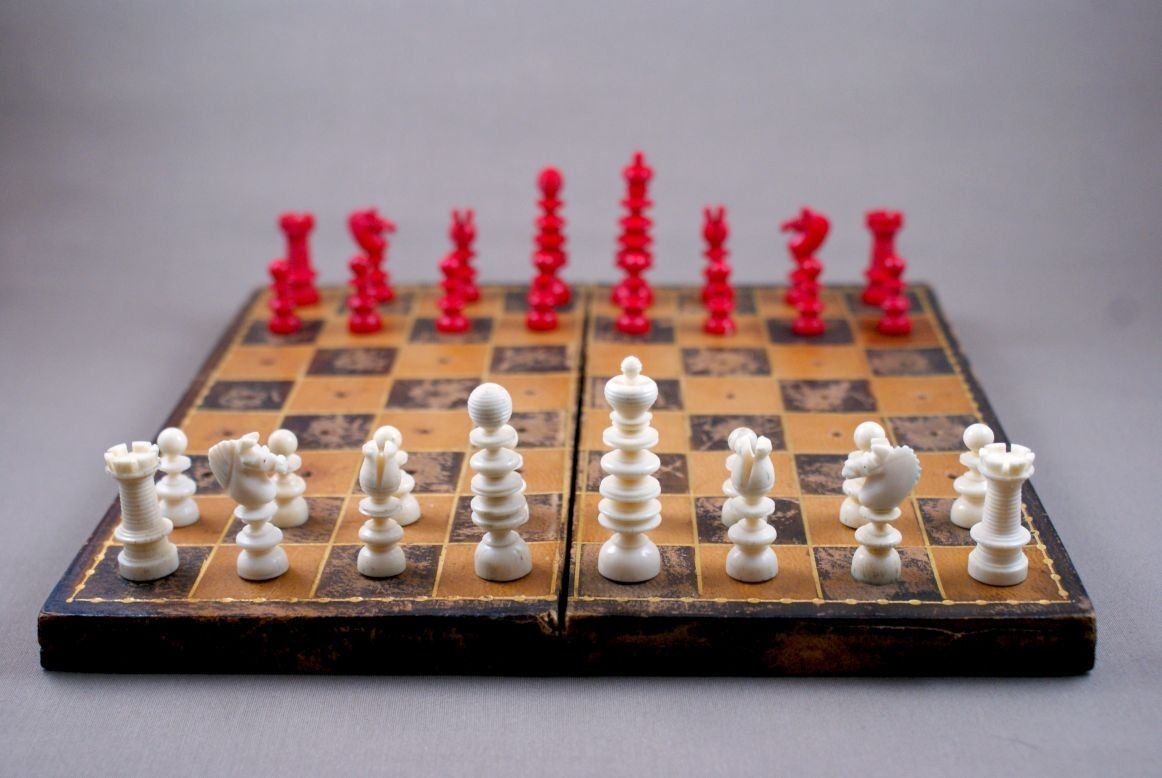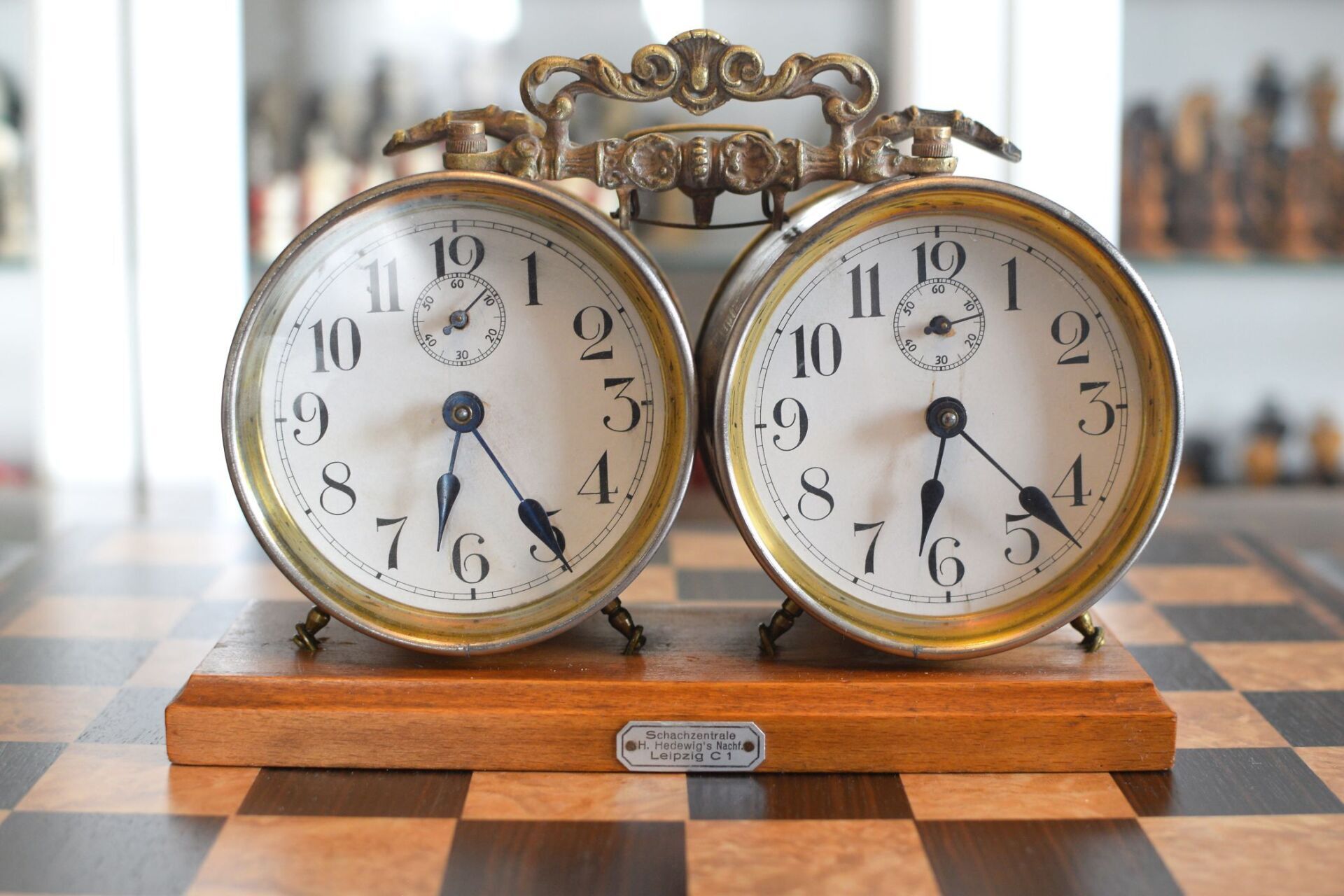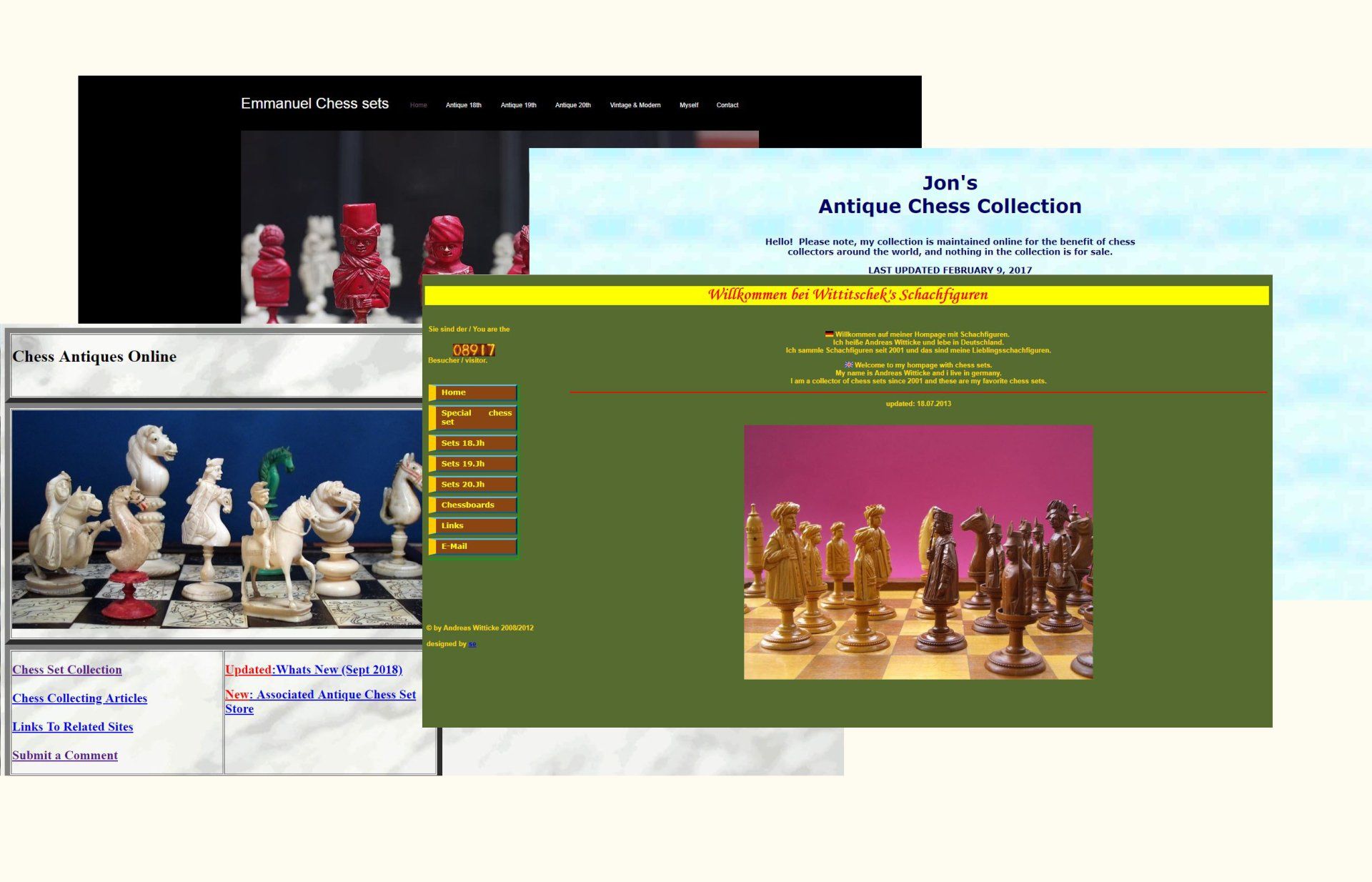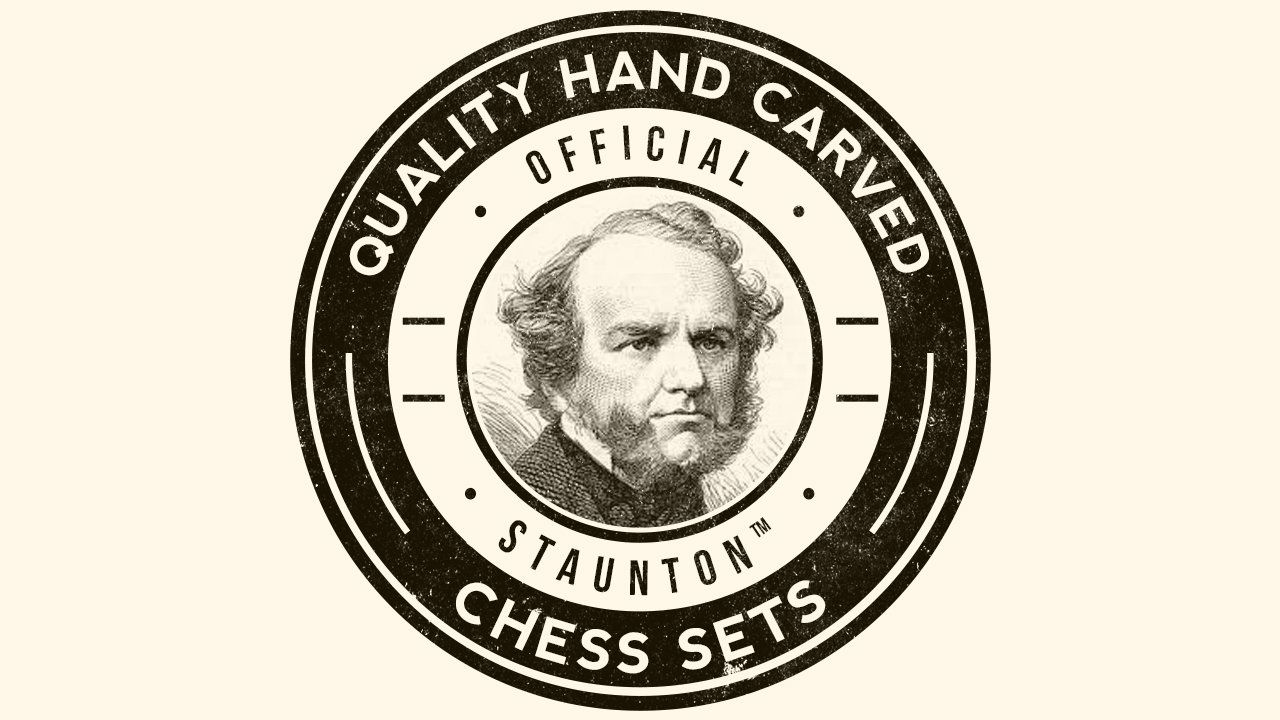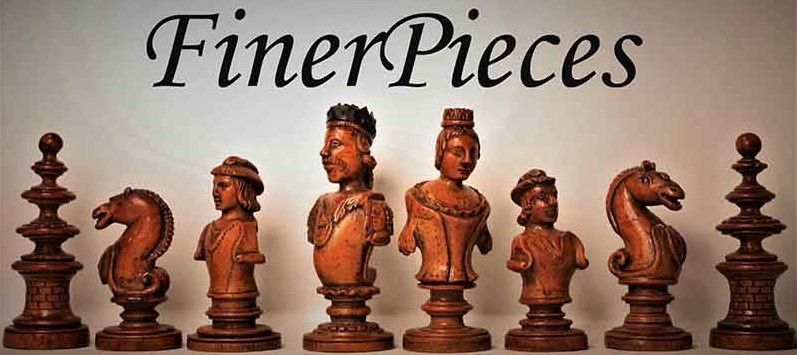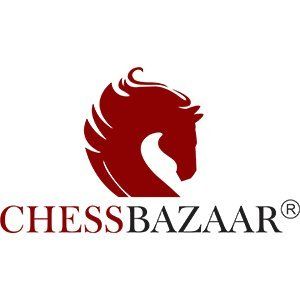Indian "John Company" Chess Set, 20th century
Here is a substantial and very impressive ornamental chess set from India. The style of the set reminds of the so called "John Company” chess sets (or short “John” sets). These ornamental sets were manufactured by skilled craftsmen of the East India Company, which was informally (and usually) called the John Company, hence the origin of the name of the sets. The company’s ivory carving workshops were located in Berhampur (also called Berhampore, Berhampoor, or Brahmapur), which is located on the far Eastern side of India, 100 miles south of the city of Bhubaneswar. Kings and queens in John Company sets are always depicted as elephants mounted with royal/upper-class riders in howdah (i.e. seats or platforms, often with railings and canopies), usually accompanied by mahouts (elephant trainers/caretakers). With few exceptions, bishops are mounted camels, knights are mounted horses, rooks are usually in tower-form, and pawns are foot soldiers. Unlike most Indian sets showing soldiers in uniform, the sepoy’s uniforms in John sets are recognisably those of the East India Company. While John Company sets were made from about the end of the 18th century throughout the 19th and early 20th century, I believe the set shown here is younger and was probably made in the first half of the 20th century. The carving quality is extraordinary and in no way inferior to 19th century John Company sets. However, I am not sure if the set strictly belongs to the John Company type. It is not clearly identifiable whether the riders and soldiers on the white side are sepoys related to the East India Company. The black side figures are bearded and wear a turban, which indicates that they are Sikh. Therefore, the set could depict anything from the opposition between the Sikhs and the Mughal states to the Anglo-Sikh wars or the Sepoy mutiny. The kings are substantial elephant carvings with two riders in a howdah and a mahout. They have an impressive size of 15.4 cm (6”). The vezirs (queens) are elephants as well, but with an open carriage on the elephants’ back, once more with two riders and a mahout. The bishops are mounted camels, the knights mounted horses. What is an unusual feature are the rooks, which are shown as smaller elephants with a rider playing a trumpet. The white side pawns are mounted camels, while the black side pawns are mounted horses, however smaller in size compared to the respective bishops or knights. All white soldiers are wielding a spear, all black soldiers are armed with a sword or scimitar. The black side is marked by black coloured bases.
